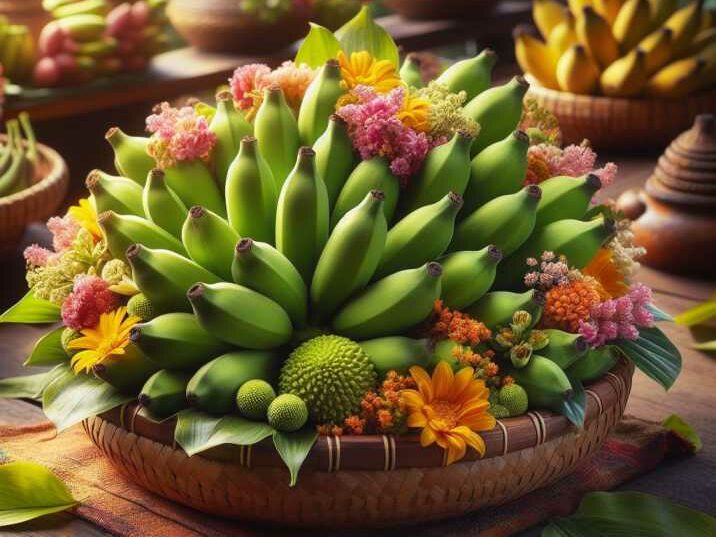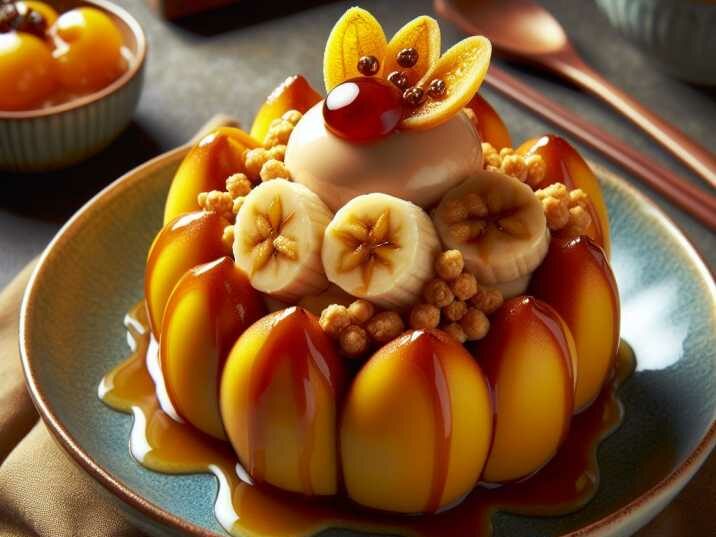Introduction
Table of Contents
Baby bananas, also known as ladyfinger bananas or petite bananas, are diminutive in size but immense in flavor and cultural significance. While bananas in general are a staple food worldwide, baby bananas hold a special place in certain regional cuisines, adding depth, sweetness, and versatility to various dishes. This article delves into the fascinating role that Baby Bananas in Global Cuisine play in culinary traditions across different regions, exploring their diverse uses, cultural associations, and impact on local cuisines.

Baby Bananas in Global Cuisine
Origins and Varieties
Baby bananas are believed to have originated in Southeast Asia, particularly in the region encompassing Malaysia, Indonesia, and the Philippines. From there, they spread to other tropical areas around the globe. These bananas are typically smaller in size compared to standard bananas and have a sweeter, more delicate flavor profile. Varieties include the popular Cavendish baby banana, as well as the Red Dacca and Pisang Mas varieties, each with its own unique taste and texture.
Culinary Uses in Southeast Asia
In Southeast Asian cuisines, baby bananas are utilized in a myriad of ways, both in savory and sweet dishes. One popular preparation is Pisang Goreng, where the bananas are coated in a crispy batter and deep-fried to golden perfection. These crispy treats are often enjoyed as a snack or dessert and are served with a sprinkle of powdered sugar or a drizzle of sweetened condensed milk.
Caribbean Cuisine: A Sweet Twist
In the Caribbean, baby bananas are celebrated for their natural sweetness, which lends itself perfectly to desserts and beverages. One beloved dish is the Caribbean banana fritter, where ripe baby bananas are mashed and mixed with flour, sugar, and spices before being fried to create delectable fritters. These fritters are often served alongside a dollop of whipped cream or a scoop of vanilla ice cream for a delightful tropical treat.
African Delights: Baby Bananas in Stews
In various African countries, baby bananas are prized for their ability to add a hint of sweetness to savory dishes. They are often used in stews and curries, where their natural sugars complement the spices and savory ingredients. One such dish is the Tanzanian plantain stew, where baby bananas are simmered with tomatoes, onions, and spices to create a hearty and flavorful stew that is served over rice or with flatbread.
Latin American Cuisine: Tostones with a Twist
In Latin American cuisine, baby bananas are commonly used to create a unique twist on the classic tostones. Instead of using green plantains, ripe baby bananas are sliced and fried until crispy, then served with savory toppings like black beans, cheese, and salsa for a flavorful and satisfying appetizer or snack. This innovative take on tostones showcases the versatility of baby bananas in diverse culinary traditions.
Indian Delicacies: Banana Pudding Reinvented
In India, baby bananas are celebrated for their role in traditional desserts like banana pudding. Unlike the Western version of banana pudding, which typically uses sliced bananas, Indian banana pudding is made with whole baby bananas that are cooked in a rich, creamy mixture of milk, sugar, and spices until thickened. This indulgent dessert is often garnished with nuts and dried fruits for added texture and flavor.
Pacific Island Treats: Grilled Banana Delights
In the Pacific Islands, baby bananas are commonly grilled to bring out their natural sweetness and caramelized flavor. Grilled baby bananas are a popular street food snack, often served skewered on bamboo sticks and sprinkled with cinnamon or drizzled with honey for an irresistible tropical treat. The smoky aroma and caramelized texture of grilled baby bananas make them a favorite among locals and tourists alike.

Conclusion
Baby bananas may be small in size, but their impact on global cuisine is undeniable. From Southeast Asia to the Caribbean and beyond, these petite fruits have found their way into a multitude of dishes, adding sweetness, flavor, and cultural significance to culinary traditions around the world. Whether fried, grilled, mashed, or stewed, baby bananas continue to captivate taste buds and inspire culinary creativity across diverse regions and cultures.
Frequently Asked Questions (FAQs)
- Are baby bananas the same as regular bananas?
- While both baby bananas and regular bananas belong to the same species, they differ in size, flavor, and texture. Baby bananas are smaller, sweeter, and more delicate in flavor compared to their larger counterparts.
- Can I use baby bananas in smoothies?
- Yes, baby bananas are excellent additions to smoothies, providing natural sweetness and creaminess to the blend.
- Are baby bananas healthy?
- Yes, baby bananas are nutritious and packed with essential vitamins and minerals like potassium, vitamin C, and vitamin B6.
- How should I store baby bananas?
- Baby bananas should be stored at room temperature until ripe, then transferred to the refrigerator to prolong their shelf life.
- Can I use baby bananas in baking?
- Yes, baby bananas can be used in baking recipes like banana bread, muffins, and cakes for a unique twist on classic desserts.
